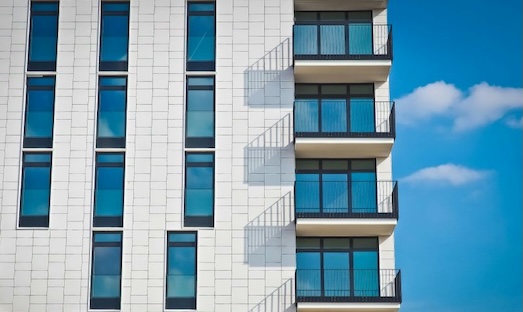The worst monthly rent performance in a September in more than a decade? That’s what Yardi Matrix reported in its most recent multifamily research report.
According to Yardi Matrix’s September Multifamily National Report, the average advertised apartment rent in the United States fell $6 to $1,750 a month in September. At the same time, year-over-year multifamily rent growth fell 30 basis points to just 0.6%.
That drop of $6 might not seem like much. But the fall in advertised rents represented the worst September showing in more than a decade. The U.S. multifamily market hasn’t seen a decline in average asking rents this large in a September since 2009.
Yardi Matrix said that in markets with too much new multifamily supply, building owners are offering concessions or cutting advertised rents to attract tenants.
That said, U.S. multifamily monthly rents are still close to all-time highs. Because of this, Yardi Matrix said that it is too soon to say that the September decline is part of a trend.
And it’s not just multifamily rents that fell in September. Yardi Matrix reported that single-family build-to-rent advertised rates fell during the month, too. The average build-to-rent advertised monthly rent dropped by $15 in September to $2,194, while the year-over-year growth rate fell 60 basis points to a flat 0.0%.
A key factor for the multifamily market’s rental fall? Yardi Matrix said that more than 525,000 apartment units are in the lease-up phase across the country. That intensifies competition among properties. Markets with the weakest rent growth are often those with the deepest pipeline of units in the lease-up phase.
An example is Dallas, which has 35,000 apartment units in lease-up, representing 3.8% of its multifamily stock. Phoenix has 22,000 units in lease-up, equal to 5.9% of its multifamily stock, while Austin, Texas, has 18,000 units in lease-up, which is 5.5% of its multifamily stock.
Some Midwest markets are bucking the trend of falling apartment rents, though. Yardi Matrix said that Chicago’s average asking apartment rent rose 3.9% in September on a year-over-year basis while that figure stood at a healthy 3.4% in the Minneapolis-St. Paul market.
Rent growth, though, remained negative in Austin, Texas, where the average advertised monthly rent fell 4% this September when compared to the same month a year ago, and in Dallas, where the advertised rent dropped 1.9% this September compared to the same month in 2024.
The national occupancy rate fell slightly to 94.7% in August, but was unchanged year-over-year, according to Yardi Matrix’s report. The Twin Cities market posted one of the largest increases in occupancy rates with a jump of 0.6% in August.
Short-term rental trends were less positive for some Midwest markets. In Detroit, the monthly advertised asking rent fell 0.4% from August to September. In Chicago and Columbus, advertised monthly rents fell 0.5% in September when compared to August.
Year-over-year rent growths were solid in many Midwest markets, though. In the Cleveland-Akron area, monthly advertised rents jumped 3.2% this September when compared to a year earlier. That figure stood at 3.1% for Cincinnati, 2.1% for St. Louis, 2% for Milwaukee and 1% for Louisville.









